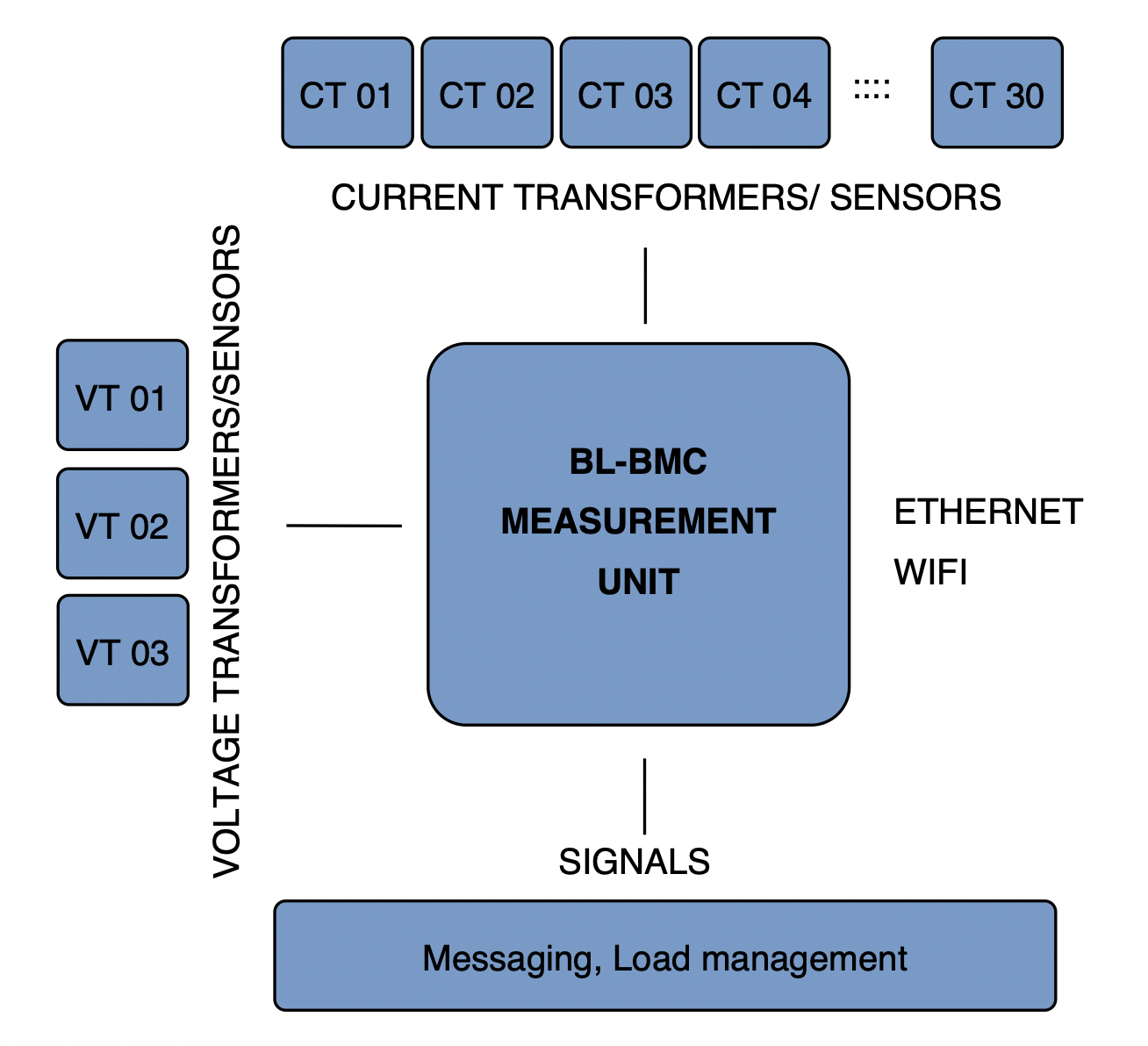Buildlink Measurement Unit Specifications
Models BMC-I30-U3 and BMC-I60-U3
- Electric submetering current measurement points/phases 30/60.
- Measurement frequency is 50 hertz.
- Voltage Measurement (External Voltage transformers/measurement module, 1 x 3 phases)
- Current Measurement (Current transormers: Solid core, Split Core, various turn rates eg. 1:40 - 1:2000)
- Multiple current measurement areas (5A, 25A, 35A, 50A, 100A, 250A etc.)
- Modular connector panels: 3,5mm plug (default), USB, Screw, Ethernet, etc.
- Modern firmware. Remote configuation, multiple measurement methods.
- Flexible installation. Highly customized, modular and scalable.
- Modes. Self diagnostic, continuous measurement, waveform analyses, etc.
- Signals, alarms and notifications. Load control, malfunction and preventive maintenance.
- Buildlink SaaS support (Calibration app, Fleet Management, Cloud Services, APIs)
- IP Class 40 (Default)
- Internet/4G/5G connection (Wifi, Ethernet)
- CE certification*, EU standard*

BMC Assembly
The steps involved in assembling an BMC electric measurement device in an industrial setting:
- Consider the space where the submeter must physically fit. Make sure there is room for the submeter and any additional devices such as Current and voltage transformers.
- Follow the manufacturer’s instructions: Carefully read and follow the manufacturer’s instructions for assembling the electric measurement device.
- Mount the device: Depending on the device structure, this may involve attaching it to a wall or a panel (usually DIN) using screws or bolts.
- Install the sensors: Install the sensors according to the manufacturer’s instructions. These may include current sensors, voltage sensors, and power sensors.
- Connect the wires: Connect the wires from the sensors to the device, following the manufacturer’s instructions. Connect Ethernet interface. Connect power to the device.
- Calibrate the device: Calibrate the device according to the manufacturer’s instructions to ensure * accurate readings. Test the device: Test the device to ensure it is functioning properly and providing accurate readings.
- Document the assembly process: Document the assembly process, including any issues or challenges that arose, for future reference.
By following these steps, you can ensure that the electric measurement device is properly assembled and ready for use in your industrial setting. By default, the submetering unit can be installed by our partner electrician but You can also order your own electrician to perform the installation of the device.